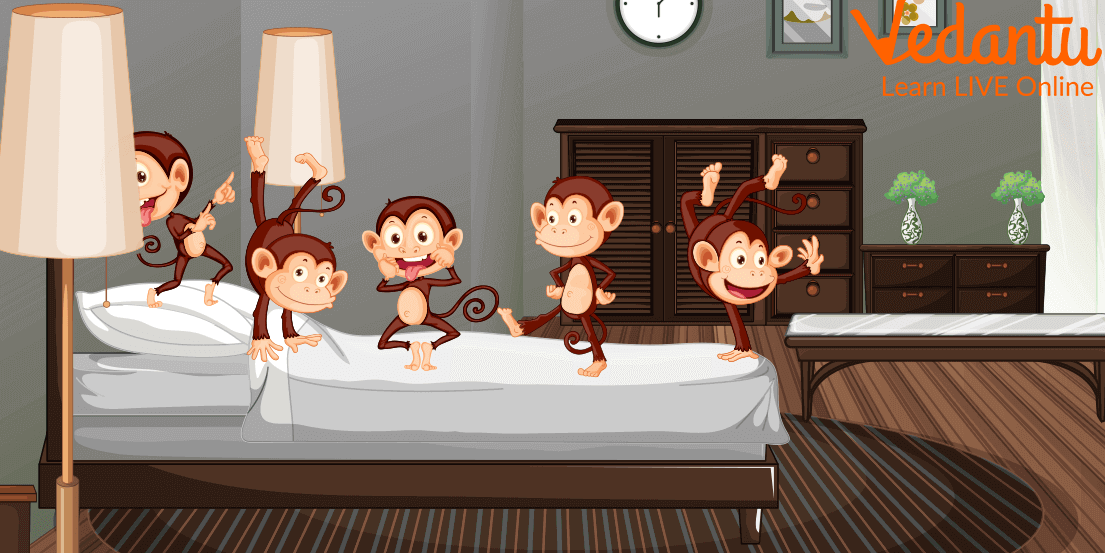About Five Little Monkeys
Five Little Monkeys is a fingerplay song in which each verse is represented by an action.
First: The number of the monkeys left jumping on the bed is shown, followed by a hand falling and tapping one’s head (signalling a bump in the head).
Second: The action is followed by a hand gesture mimicking a telephone call (calling the doctor) and wagging (to move up and down or from side to side with quick, short movements) the finger during the last part (furthermore, no more monkeys jumping on the bed).
Now, let us start with the lyrics of this song and help your kids learn dance steps. You can also apply steps in teaching them any language or Mathematical concepts.
Lyrics of The Five Little Monkeys Song

Five Little Monkeys Jumping on the Bed
Five little monkeys jumping on the bed,
One fell down and bumped his head,
Mama called the doctor and the doctor said,
No more monkeys jumping on the bed!
Four little monkeys jumping on the bed,
One fell down and bumped his head,
Mama called the doctor and the doctor said,
No more monkeys jumping on the bed!
Three little monkeys jumping on the bed,
One fell down and bumped her head,
Mama called the doctor and the doctor said,
No more monkeys jumping on the bed!
Two little monkeys jumping on the bed,
One fell down and bumped his head,
Mama called the doctor and the doctor said,
No more monkeys jumping on the bed!
So, monkey nursery rhymes show the prankish nature of little monkeys who love jumping on the bed and they don’t stop until they get tired. We conclude from the song that we should continue working hard despite facing hardships and win the game of our life.


FAQs on Five Little Monkeys – Nursery Songs for Kids
1. What is the meaning of “five little monkeys jumping on the bed”?
The little monkeys signify the multiple paths we try to reach at some point. The moral of the song is to make your child aware that she should work hard and achieve something. However, in the journey of success, they should not hurt themselves and others around them. In the end, the success achieved by happiness is always fruitful and peaceful.
2. What is the story behind nursery rhymes?
Going back to history, we notice that lullabies and nursery rhymes were used as educational tools to teach children about history, morality, and proper behaviour or the mode of conduct. Over time, the term "lullaby" stuck, and we now consider it a soothing song that we use to calm children.





